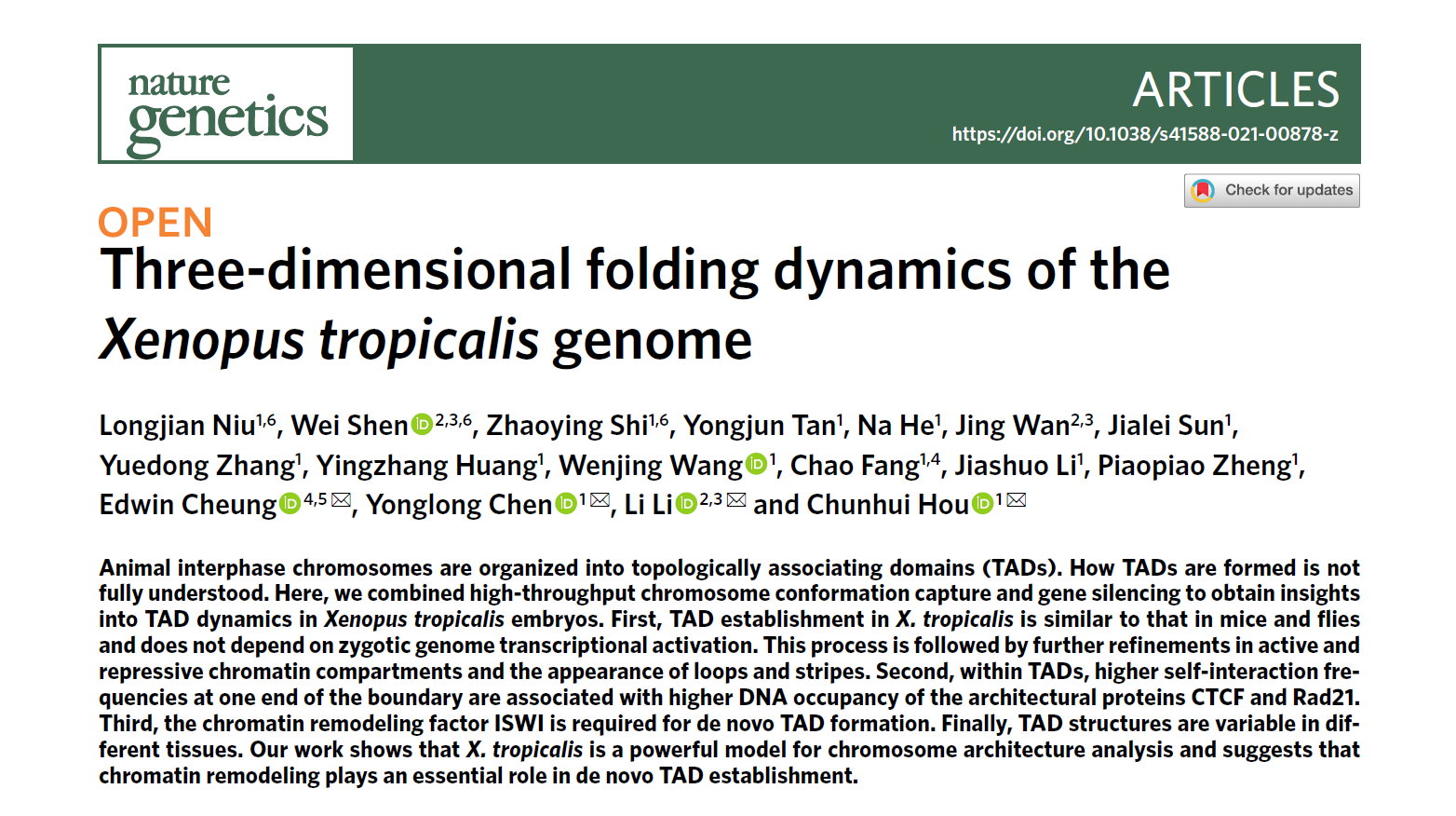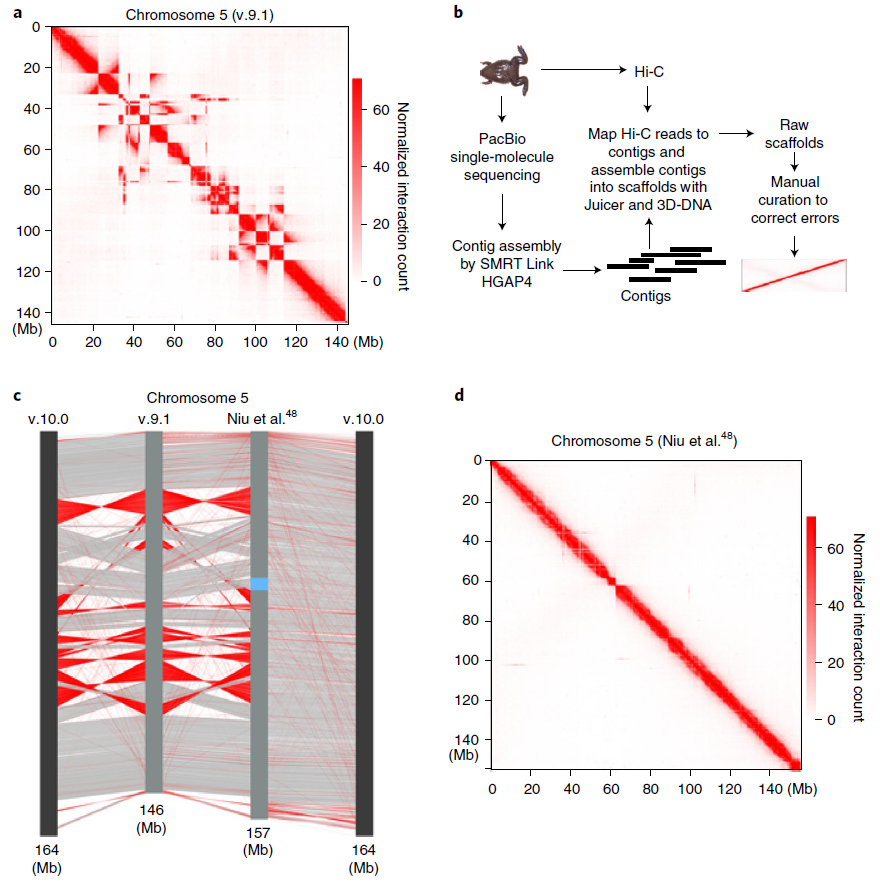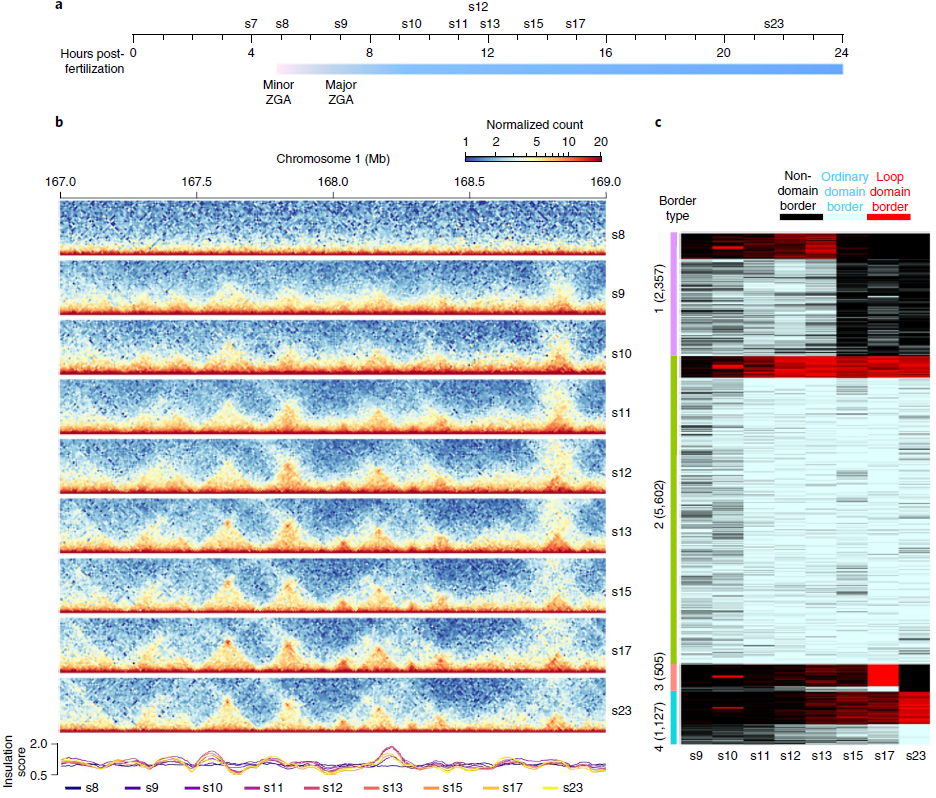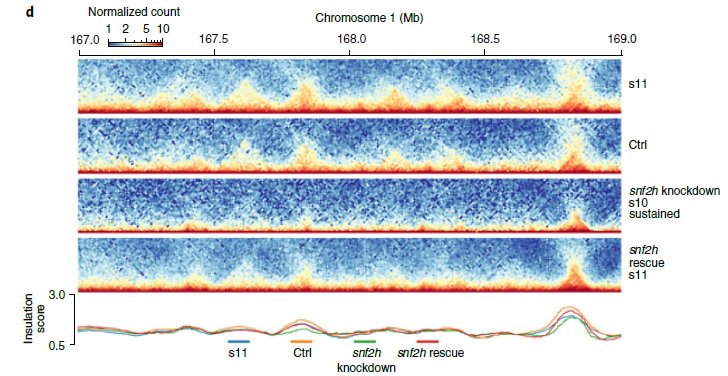SUSTech Chunhui Hou’s team reveals how three-dimensional genome structures are established during embryogenesis
DATE:2021-06-17
Chromosomal DNA is organized into 3D structures called topologically associating domains (TADs). TADs are indispensable for proper gene regulation. When TAD formation goes awry, this can lead to aberrant gene expression, developmental defects, and diseases such as cancer. However, what is not clearly understood is the mechanism of how are TADs formed.

Recently, Associate Professors Chunhui Hou and Yonglong Chen from the Department of Biology at the Southern University of Science and Technology (SUSTech), in collaboration with researchers from Huazhong Agricultural University (HZAU) and the University of Macau (UM), unveiled the intricacies of three-dimensional (3D) genome folding during the early stages of Xenopus tropicalis embryo development. Their paper, entitled ‘Three-dimensional folding dynamics of the Xenopus tropicalis genome,’ was published in Nature Genetics, a high-profile research journal in genetics.

Professor Hou and his team addressed this issue using the western clawed frog, Xenopus tropicalis, as a model system. The X. tropicalis genome has been sequenced but contains many errors. To use this animal model for exploring how 3D genome structures are established, his team first sequenced and re-assembled the X. tropicalis genome to build an entirely new reference genome.

Figure 1. Re-assembling the X. tropicalis genome
Next, using the high-throughput chromosome conformation capture (Hi-C) technology, they mapped the 3D genome structure of X. tropicalis at multiple stages during early embryogenesis. Their findings revealed that TAD formation during X. tropicalis embryo development is very similar to mice and flies. They also showed that the X. tropicalis genome undergoes further structural changes during later stages of embryo development, including the formation of active and repressive chromatin compartments and the emergence of loops and stripes.

Figure 2. De novo TAD establishment during X. tropicalis embryogenesis
Transcription is essential for TAD formation during human embryo development, but its role in forming the genome structure of X. tropicalis is unknown. Through gene silencing experiments and chemical inhibition assays, Professor Hou’s team showed that transcription is required for embryo development but not the establishment of TADs, indicating significant differences in requirements for TAD establishment among species.
Professor Hou’s work on the western clawed frog also showed that previously characterized genome structural proteins, such as CTCF and Rad21, are vital components for establishing TADs during embryonic development. Moreover, they demonstrated that the chromatin remodeling factor ISWI is responsible for enhancing CTCF binding, TAD structure formation, and embryonic development. Together, these findings indicate that chromatin remodeling plays a crucial role in establishing the 3D genome structure of X. tropicalis.

Figure 3. ISWI is required for TAD establishment
TAD structures are highly conserved across different mammalian tissues and cells. However, Professor Hou’s team observed this is not the case for X. tropicalis. They showed TAD structures varied between the different tissues of X. tropicalis, including the brain, liver, and sperm. Interestingly, they also revealed the chromosomal DNA in X. tropicalis sperm cells has no TAD structures, similar to human sperm but different from mouse sperm. These results highlight the evolutionary process of chromatin structure formation in male gametes is not very well conserved.
The project was led by SUSTech, in collaboration with HZAU and UM. Postdoctoral fellow Longjian Niu from SUSTech, Ph.D. students Wei Shen and Zhaoying Shi, from HZAU and SUSTech, respectively, are the paper’s co-first authors. Associate Professor Chunhui Hou of SUSTech presided over the research. Professor Li Li from HZAU, Associate Professor Yonglong Chen from SUSTech, and Professor Edwin Cheung from UM are the co-corresponding authors.
Paper link:
latest news
-
Dynamic changes in transposable elements shape human three-germ-layer differentiation
Date:2025-09-04
-
Researchers collaborate to uncover how SOD1 protects lysosome through autophagy
Date:2025-08-26
-
Researchers find 5-IP7 disrupts intestinal epithelial barrier and drives inflammation-induced colorectal cancer
Date:2025-08-26
-
Researchers decode molecular architecture and inhibition mechanism of human taurine transporter
Date:2025-08-22
